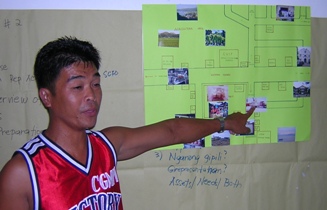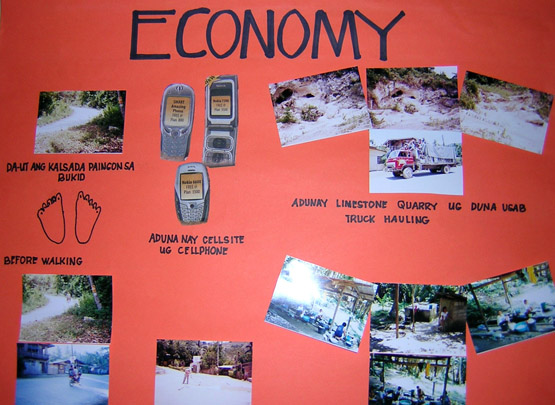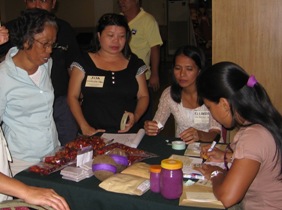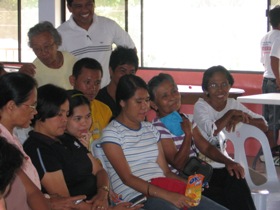| A Catalyst for Community Partnering Finding Institutional Partners Recruiting and Training Community Researchers Conducting Research with Community Members Presenting Research Findings Sustaining Partnerships |
Presenting Research FindingsCommunity members, community leaders, and the wider public need to understand the Community Partnering Process so that they can feel a part of it. So communicating what is happening in easily accessible ways is important. remember that not all community members are literate. And often there are different languages spoken and read in any community. Use as much visual material and real world show and tell as possible. There are many ways that the process can be communicated:
Photo Essays
Assets maps as photo essays One way to see the assets of a place is to make a photo essay that others can look at and discuss. All sorts of images can be used such as hand drawn pictures, photographs or cut-out pictures. Adults enjoy the task of creating photo essays that contrast a needs-focused view of a community and an assets-focused view. Here are some examples of photo essays created by community researchers in the Philippines. They were put up in the Community Partnering Project office and continued to be a talking point throughout the project. The first shows the some of the economic assets of Jagna:
Economic assets
Cultural and social assets The second poster shows cultural and social assets:
Photo essays of the community enterprise building process Many people will be curious about how a group of people began a community enterprise. A photo essay is one way to track the development of the enterprise. This photo essay shows steps in the process of nata de coco making that one enterprise group experimented with. It was used at public presentations to explain what the group were doing.
Poster showing development of the nata de coco enterprise Site Visits
Public Displays and PresentationsPublic presentations about Community Partnering are an important way of broadcasting the guiding ideas of the process and showing how they have taken root in a local site. All partners will be interested in regular updates about the process. If the technology is available and the audience accessible, a short powerpoint presentation is a good way to communicate where the process is up to. If powerpoint facilities are not available the key ideas and milestones can be talked through using other kinds of visual materials, such as photo essays, to illustrate.
Story TellingTelling stories is one of the most powerful ways of inspiring change. People love to hear about the experiments of others and how their risk-takig turned out. Community Partnering in any place will give rise to many stories that are worth telling. They will include stories of success as well as failure. The more stories we tell about new pathways for local development, the more likely we will inspire others to take the plunge and begin to make the economy work for community and enviomnmental health.
Community members reading about their achievements The written word There is also a great deal of value in writing up the story of Community Partnering in any locality. This allows researchers and students to delve more deeply into the details of what happened and what lessons can be learnt. Stories can be written up for a popular audience, such as in Focus, a magazine put out by AusAID to be sent around the Asia Pacific region to inform people about the projects that it supports. The picture above shows how interested community members were in reading about their achievements in this format. Community members may not be able to write these stories but their thoughts will be included in quotes from interviews. Stories can also be written up in academic journals or books that can be accessed by other university based researchers. Community Partnering can extend to writing partnerships. In 2009 a writing workshop was held in Australia that brought together Philippines-based NGO workers with early career academics from the Australian National University. Working in pairs, the NGO workers and academics wrote up community enterprise stories from Bohol and Mindanao that were included in a 2009 book published in the UK called The Social Economy: International Perspectives on Economic Solidarity edited by Ash Amin. The stories of the Laca Ginger Tea Community Enterprise and the Jagna Nata de Coco Community Enterprise are included in Chapter 6 "Bulding community-based social enterprises in the Philippines:diverse development pathways" by the Community Economies Collective and Katherine Gibson.
|








